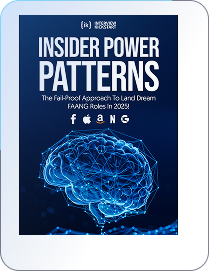Data Warehousing is a valuable skill for many data-related roles like Data Engineering. Industries implement data warehousing to store large amounts of data that can later be used for making informed decisions. A well-designed data warehouse helps tech professionals to access it efficiently.
Proficiency in this area is crucial for building efficient data pipelines and ensuring data integrity. By engaging with these MCQs on data warehousing, Data Engineers, Data Analysts, and Business Analysts can reinforce their understanding of the core concepts.
You must revisit such interview questions while you are on a self-learning journey. These are the first steps to test your knowledge on fundamentals. Once you gauge your performance on these basic concepts, you can proceed with more advanced questions.
MCQs are the first step toward your extensive interview preparation. We have more crucial and advanced questions you can explore to test your knowledge.
We have curated a list of MCQs on data warehousing. These questions address the integration of data warehousing with BI tools for data mining and forecasting, data transformation processes, the central role of the data warehouse database server, and the stages of ETL processes.
Also Read: Data Engineer Career Path to Follow in 2024
Dividing deep into data warehousing, we will cover different types of MCQs, including BI tools, ETL MCQs, data engineering interview questions, and data warehousing MCQs.
Data warehousing is the process involving the collection, storage, and management of data for the organizational benefit.
Also Read: How to Prepare for Data Engineer Interviews
Answer: d. Both a and b
Answer: d. Converting data from detailed to summary level
Answer: c. Data warehouse database server
Answer: d. Both a and b
Answer: a. Extraction
Answer: 2
Answer: d. All of the above
Answer: a. Data storage in one operational system
Answer:Â c. Online Analytical Processing
Answer: d. All of the above
Answer: A process that extracts, transforms, and loads data from various sources into a centralized repository for analysis and reporting in near real-time
Answer: c. Localization testing
Answer: d. OLAP
Answer: d. All of the above
Answer: c. Both a and b
Answer: b. Maintaining historical data over time
Answer: b. The range of time covered by the historical data stored in the data warehouse
Answer: c. 5 to 10 years
Answer: a. Full refresh
Answer: d. All of the above
You can elevate your interview process with our comprehensive Data Engineering interview masterclass.
In addition to this, current Data Analysts and Business Analysts looking to land a job at FAANG or tier-1 companies can explore our Data Analyst interview preparation course. The program starts with basics on SQL followed by data analytics and system design, covering data warehousing concepts.
These courses have been strategically co-created by our top instructors who stay current with the latest trends. They bring their expertise in the curriculum so that know what interview patterns the top companies are following.
You also get a 6-month of support period where you will go through 15 mock interviews. This also includes 1:1 technical and career coaching followed by an interview strategy to crack the toughest interviews.
Our success stories stand as a testament that we are committed to helping you achieve your dream.
Q1. Is Databricks a data warehouse?Â
No, Databricks is not a data warehouse but a data analytics platform.
Q2. What are the benefits of data warehousing?
Data warehousing offers multiple benefits, such as saving time, storing historical data, increasing data security, improving business intelligence, leading to data consistency, and others.
Q3. Is SQL considered ETL?
SQL or Structured Query Language is not considered ETL or Extract, Transform, and Load. Yet, it plays a significant role in the process. SQL is one among multiple components of the broad ETL process.
Q4. What are the three steps in building a data warehouse?Â
The three fundamental steps in building a data warehouse are requirement analysis and planning, data modeling and design, and ETL development and implementation.
Q5. Do all companies have a data warehouse?Â
No, not all companies have a data warehouse. However, proper data handling is needed at every business, regardless of its scale.
Q6. What is the data warehouse lifecycle?Â
The data warehouse lifecycle includes the following components: Data modeling, ETL design and development, OLAP cubes, UI development, maintenance, test and deployment, and requirement specification.
Q7. What are the three data warehouse models?Â
The three data warehouse models are enterprise warehouse, data mart, and virtual warehouse.
Related Articles:
Attend our free webinar to amp up your career and get the salary you deserve.

693+ FAANG insiders created a system so you don’t have to guess anymore!

100% Free — No credit card needed.

Time Zone:






Get your enrollment process started by registering for a Pre-enrollment Webinar with one of our Founders.

The 11 Neural “Power Patterns” For Solving Any FAANG Interview Problem 12.5X Faster Than 99.8% OF Applicants
The 2 “Magic Questions” That Reveal Whether You’re Good Enough To Receive A Lucrative Big Tech Offer
The “Instant Income Multiplier” That 2-3X’s Your Current Tech Salary

The 11 Neural “Power Patterns” For Solving Any FAANG Interview Problem 12.5X Faster Than 99.8% OF Applicants
The 2 “Magic Questions” That Reveal Whether You’re Good Enough To Receive A Lucrative Big Tech Offer
The “Instant Income Multiplier” That 2-3X’s Your Current Tech Salary
Just drop your name and email so we can send your Power Patterns PDF straight to your inbox. No Spam!
By sharing your contact details, you agree to our privacy policy.
Time Zone: Asia/Dhaka

We’ve sent the Power Patterns PDF to your inbox — it should arrive in the next 30 seconds.
📩 Can’t find it? Check your promotions or spam folder — and mark us as safe so you don’t miss future insights.
We’re hosting a private session where FAANG insiders walk through how they actually use these Power Patterns to crack interviews — and what sets top performers apart.
🎯 If you liked the PDF, you’ll love what we’re sharing next.
Time Zone:

